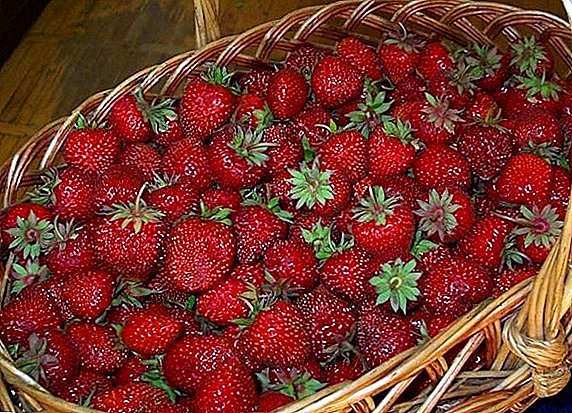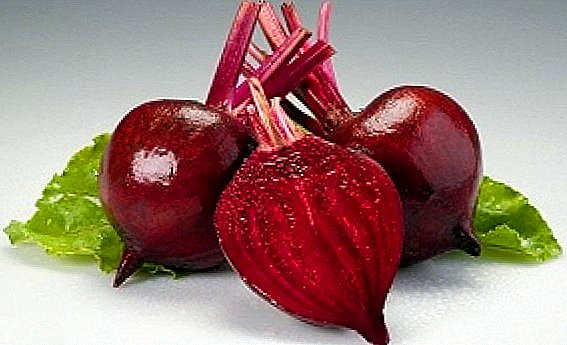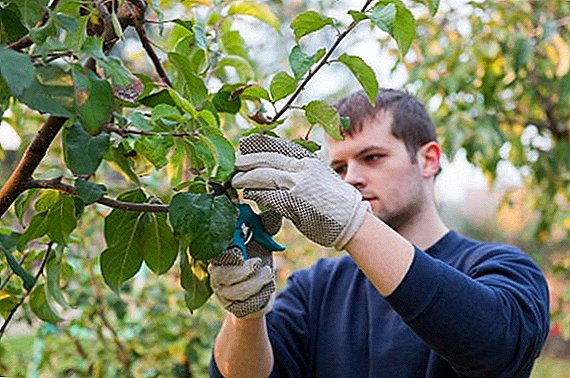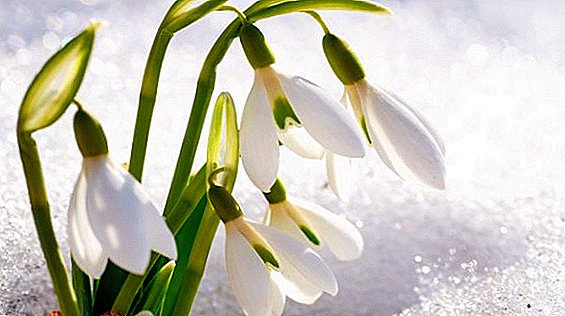 Flower firstborn spring - that's what they say about snowdrop, whose flowering symbolizes the end of cold and winter. At the first warm rays of the sun, when thawed patches form in the forest, snowdrops appear. Their delicate flowers contrast beautifully with their milky-white color against the background of black soil. In some nations, the flowering of this plant is associated with the hope of a new life, the arrival of heat. Today, if desired, any owner of a garden or a summer cottage can acquire such beauty. Suffice it to choose a suitable place for a snowdrop, read the description of the species and arm yourself with information about the specifics of its cultivation.
Flower firstborn spring - that's what they say about snowdrop, whose flowering symbolizes the end of cold and winter. At the first warm rays of the sun, when thawed patches form in the forest, snowdrops appear. Their delicate flowers contrast beautifully with their milky-white color against the background of black soil. In some nations, the flowering of this plant is associated with the hope of a new life, the arrival of heat. Today, if desired, any owner of a garden or a summer cottage can acquire such beauty. Suffice it to choose a suitable place for a snowdrop, read the description of the species and arm yourself with information about the specifics of its cultivation.
In different nations, this primrose is known by various names. Thus, the scientific Latin name galantus (Galanthus), which means dairy flower. The English name is Snowdrop, meaning "snow drop". In Germany, the flower is called the snow bell.
Did you know? There are many legends about the origin of snowdrops. According to biblical tales, galantus became the first flower that Eve saw after she was expelled from Paradise. Seeing him, she found the hope that God would not leave people. A Greek legend says that these flowers were formed from drops of breast milk from the mother of Apollo and Artemis, called Leto.
Snowdrop: a description of the first spring flowers
 Snowdrop or galantus is a small (10-50 cm) perennial bulbous plant of the Amaryllis family with a short growing season. Distributed in the near-boundary forests, on forest edges, along river banks in Europe and Asia Minor. The genus includes 18 species. In the culture of planting snowdrop Elweza, Voronov, ordinary (snow-white), alpine, folded, Caucasian, etc.
Snowdrop or galantus is a small (10-50 cm) perennial bulbous plant of the Amaryllis family with a short growing season. Distributed in the near-boundary forests, on forest edges, along river banks in Europe and Asia Minor. The genus includes 18 species. In the culture of planting snowdrop Elweza, Voronov, ordinary (snow-white), alpine, folded, Caucasian, etc.
Galanthus blooms in early spring with single white drooping flowers in the form of bluebells. The perianth consists of six petals 15-30 mm long. It has two linear sheets 0.5-3 cm wide and 10-20 cm long. It blooms one of the first among primroses - by the end of February - the beginning of March, as soon as the snow begins to fall. When the flowers of snowdrops appear, the other early spring cultures are still asleep. The duration of their flowering is approximately one month. Most often grow in groups.
Did you know? Other early flowering spring plants are also sometimes referred to as snowdrops. For example, anemone, scilla. However, these are completely different plants.
 In order for the snowdrop description to help you clearly define its role on the site, it is necessary to clarify the features of the flower development. The fact is that most of the year, like all plants with a short growing season, he spends underground. After flowering in February-April, fruiting and dying off the leaves goes into hibernation. All other months the onion develops. She is gaining strength for a new period of flowering, feeds on useful substances. The bulb leaves the rest period in the fall (in October) - it is then that new roots start growing. December-January is the period when snowdrops begin to grow.
In order for the snowdrop description to help you clearly define its role on the site, it is necessary to clarify the features of the flower development. The fact is that most of the year, like all plants with a short growing season, he spends underground. After flowering in February-April, fruiting and dying off the leaves goes into hibernation. All other months the onion develops. She is gaining strength for a new period of flowering, feeds on useful substances. The bulb leaves the rest period in the fall (in October) - it is then that new roots start growing. December-January is the period when snowdrops begin to grow.
Despite its apparent external fragility, the plant is winter-hardy, it tolerates February and March sharp temperature drops. Unpretentious care. Not demanding on the composition of the soil. Not afraid of diseases and pests.
Growing a snowdrop in the garden, varieties for growing
Growing galantus in the garden is absolutely not difficult. Today, their choice is huge - about 120 varieties and hybrids of this primrose have been bred by breeders. Species and varieties of snowdrops differ in stem height, color of the lower petals, the structure and size of flowers, the period and duration of flowering. Most often, dachas grow Elvez snowdrop, ordinary (snow-white), folded and their varieties.
Did you know? All species of wild snowdrops are protected. Some species (snowdrops of Bortkiewicz and Voronov, Lagodekhsky, folded, narrow-leaved, broadleaf) are included in the register of rare and endangered plants in the Red Book. Their collection, sale and purchase shall be punished with a fine. Allowed to sell only snowdrops grown in greenhouses.
Galanthus Elweza or southern (Galanthus elwesii) refers to tall species - reaches a height of 15-30 cm (some varieties grow to half a meter). It has wide leaves - up to 2 cm. Flowers this type of snowdrops releases early - in February-March (the term depends on the region of growth). Petals are white with a yellow spot at the base. There are 15 known varieties of this species.
Common Galantus (Galanthus nivalis) blooms a little later than Elweza snowdrop - in March-April. Its flowers grow to 1.5-2.5 cm. The leaves are dark green, 10 cm tall. About 50 varieties of this species were bred. The most common among them are Flore Pleno, Viridapice, Samuel Arnott.
Galanthus folded (Galanthus plicatus) got its name because it has a fold on the sheets. The leaves are painted gray-green, curved at the edges. The flowers are white, 2-3 cm long. Lower petals - with a bright yellow or yellow-green spot in the middle. It blooms in February and April.
Despite the fact that galantus is considered an unassuming plant, it is necessary to follow some guidelines for its planting and care.
Choosing a place for snowdrops in the garden
Galanthus prefers open light areas with a slight shade, for example, under the shade of a shrub or deciduous tree. The flower will be able to grow on any soil, but it will be best taken in the fertile, loose soil.
Important! The main condition for growing galantus is the abundance of moisture in the spring.
How to plant snowdrops in the country
Planting galantus in the country is not difficult. It is a very resistant flower, it can grow, undergoing both temporary droughts and long frosts, alternating with short thaws.
Soil preparation for planting
The snowdrop is able to adapt to any soil, but still, if there is an opportunity, you can help it quickly settle in the open field. So, if you have clay soil, then it is necessary to make sand. In any case, it is desirable to drain the soil - the bottom of the wells should be covered with compost or humus.
How to plant snowdrops, the reproduction of the first flowers of spring
 How to breed snowdrops? It is possible to plant new plants in several ways: seed and vegetative - by dividing the bulb. Seed method is long - seedlings should be expected in 3-5 years. It is used very rarely. It is much faster and easier to propagate primroses by dividing the bulbs. To do this perhaps in early spring. At this time, you can plant when the snowdrops bloom. Or during the period of vegetative rest - after the leaves have dried: from July to September. For the first planting, the bulbs must be purchased in a specialty store or separated from the onion from friends and neighbors. During the summer one bush forms from one to four onions. The separation is best carried out when the group of plants reaches 7-9 copies.
How to breed snowdrops? It is possible to plant new plants in several ways: seed and vegetative - by dividing the bulb. Seed method is long - seedlings should be expected in 3-5 years. It is used very rarely. It is much faster and easier to propagate primroses by dividing the bulbs. To do this perhaps in early spring. At this time, you can plant when the snowdrops bloom. Or during the period of vegetative rest - after the leaves have dried: from July to September. For the first planting, the bulbs must be purchased in a specialty store or separated from the onion from friends and neighbors. During the summer one bush forms from one to four onions. The separation is best carried out when the group of plants reaches 7-9 copies.
Plant bulbs need no later than a month after the acquisition or separation. Otherwise, the flower will be much less likely to take root in the open field. All this time, the bulbs must be stored in a cool place, you can in the wet sand. Before planting bulbs, it is necessary to make sure that they are whole, without processes, are not affected by mold and rot. Their roots should not be dry. Obligatory condition - the integrity of the bulb ends.
Did you know? Snowdrop bulbs contain galantamine alkaloid, therefore they are poisonous to humans. For the same reason, they are practically not affected by pests.
 Planting depth is soil dependent. On loose soil, the bulb must be buried by a distance of 2-3 times longer than the bulb itself. In heavy soils, planting is carried out on the length of the bulb, and the depth of the hole should not be less than 5 cm. Usually, galantuses are planted in rows of 10-30 plants or in groups. If snowdrops are planted in the fall, then before the cold, the soil must be mulched with peat or humus.
Planting depth is soil dependent. On loose soil, the bulb must be buried by a distance of 2-3 times longer than the bulb itself. In heavy soils, planting is carried out on the length of the bulb, and the depth of the hole should not be less than 5 cm. Usually, galantuses are planted in rows of 10-30 plants or in groups. If snowdrops are planted in the fall, then before the cold, the soil must be mulched with peat or humus.
When it will be six years after planting, it is recommended to transplant snowdrops to a new place in the spring, not waiting for flowering and until the green leaves. Repot them with an old clod of earth, without disturbing the onion - snowdrops do not like this. They also do not tolerate when they are disturbed during the flowering period. In general, reacting to a transplant is capricious - sometimes they even refuse to bloom for several years. Often, the first flowering can wait two or three years. However, later, after the plant has taken root, it will bring flowers annually.
Secrets of growing a snowdrop in the garden
So, you already know how and where to plant snowdrops, how to transplant them. Next, we will focus on a few tips on the care of primroses in the garden.  Secrets of the successful cultivation of galantus is not so much. First, if spring does not indulge in rains, then it is advisable to water the flowers. Watering is also carried out immediately after germination and in particularly dry periods. Secondly, for cutting the leaves, it is worth waiting for the beginning of the dormant period — when they naturally die off. Otherwise, it is possible to disrupt the development of the bulbs and provoke stopping the flowering next season.
Secrets of the successful cultivation of galantus is not so much. First, if spring does not indulge in rains, then it is advisable to water the flowers. Watering is also carried out immediately after germination and in particularly dry periods. Secondly, for cutting the leaves, it is worth waiting for the beginning of the dormant period — when they naturally die off. Otherwise, it is possible to disrupt the development of the bulbs and provoke stopping the flowering next season.
During the period of active growth, garden snowdrops can be fed with liquid inorganic potassium phosphate fertilizers.
Important! Do not use nitrogen fertilizer for fertilizing snowdrops. This can provoke abundant growth of the leaves of the plant and, as a consequence, the development of fungal diseases in them.
Of the diseases, snowdrops can be affected by rust, gray mold, chlorosis, and some viral diseases. Also, they can attack rodents, slugs, butterflies, moths, bulbous nematode. Snowdrops are actively used in landscape design. When making flowerbeds, they can be planted in separate groups or as a ground cover plant. The flowers are used in stony gardens, rockeries and alpine slides. Perhaps the use of galantus in pot culture.  If you plant different types of primroses, you can achieve a longer flowering - for three months. So, in February, will begin to bloom Elweza snowdrops. Snow-white galantuses will give flowers in a month, in March. Folded snowdrops can gladden flowering in March-April. The latest are broadleaf galantus. Other primroses will be the best neighborhood for a flower: crocuses, primroses, lungwort, narcissus, hyacinths. Beautifully look with grassy perennials of medium and high sizes: hosts, peonies, ferns.
If you plant different types of primroses, you can achieve a longer flowering - for three months. So, in February, will begin to bloom Elweza snowdrops. Snow-white galantuses will give flowers in a month, in March. Folded snowdrops can gladden flowering in March-April. The latest are broadleaf galantus. Other primroses will be the best neighborhood for a flower: crocuses, primroses, lungwort, narcissus, hyacinths. Beautifully look with grassy perennials of medium and high sizes: hosts, peonies, ferns.
If the place for planting a snowdrop is picked up successfully and the flower successfully takes root on it, then after a while it will begin to multiply on its own, without human intervention. And you will only enjoy admiring the gentle green-white rugs in early spring.












